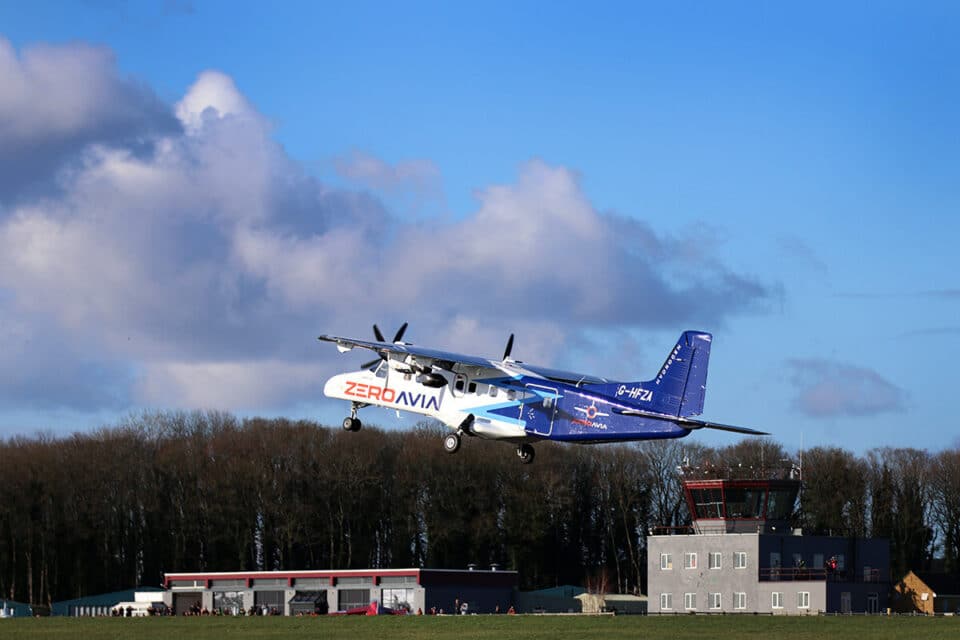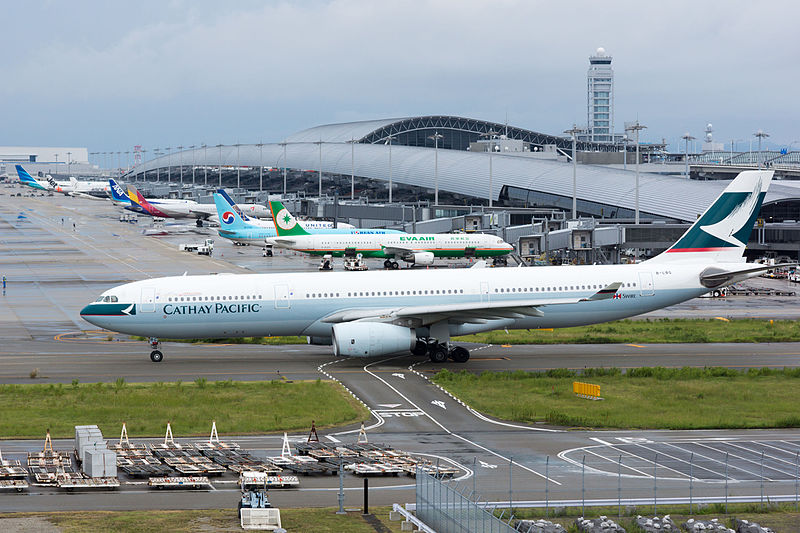Airlines
ZeroAvia Makes Aviation History, Flying World’s Largest Aircraft Powered with a Hydrogen-Electric Engine

-
19-seat Dornier 228 twin-engine aircraft takes to the sky in testbed configuration for first flight as part of the HyFlyer II project.
-
Milestone moves ZeroAvia forward on the way to meeting target of commercial flights using only hydrogen fuel cell power by 2025, and scaling the engine technology to larger airframes.
-
Marks a significant step in addressing aviation’s climate change impact and a major innovation success for the UK Government’s Jet Zero Strategy.
The largest aeroplane in the world to be propelled by a hydrogen-electric engine, flown by ZeroAvia, marked a significant advancement in zero-emission flight. The pioneer in zero-emission aviation went to the sky for the first time with its 19-seat Dornier 228 testbed aircraft. The aircraft’s left wing has been retrofitted with a full-size prototype hydrogen-electric powerplant.
Comparison between Dornier-228 v/s Indonesian N219(Opens in a new browser tab)
The flight took place from the company’s R&D facility at Cotswold Airport in Gloucestershire, UK, and lasted 10 minutes. At 13.35 pm GMT this afternoon the aircraft completed taxi, take-off, a full pattern circuit, and landing. The landmark flight forms part of the HyFlyer II project, a major R&D programme backed by the UK Government’s flagship ATI Programme, which targets development of a 600kW powertrain to support 9-19 seat aircraft worldwide with zero-emission flight.
The twin-engine aircraft was retrofitted to incorporate ZeroAvia’s hydrogen-electric engine on its left wing, which then operated alongside a single Honeywell TPE-331 stock engine on the right. In this testing configuration, the hydrogen-electric powertrain comprises two fuel cell stacks, with lithium-ion battery packs providing peak power support during take-off and adding additional redundancy for safe testing. In this testbed configuration, hydrogen tanks and fuel cell power generation systems were housed inside the cabin. In a commercial configuration, external storage would be used and the seats restored.
Top 6 Largest Passenger Aircraft in the World.(Opens in a new browser tab)
All systems performed as expected. This is the largest ZeroAvia engine tested to date, and places the company on the direct path to a certifiable configuration to be finalized and submitted for certification in 2023, with this programme also serving as key to unlocking speedy technology development for larger aircraft. ZeroAvia’s 2-5 MW powertrain programme, already underway, will scale the clean engine technology for up to 90-seat aircraft, with further expansion into narrowbody aircraft demonstrators over the next decade.
ZeroAvia will now work towards its certifiable configuration in order to deliver commercial routes using the technology by 2025. The Dornier 228 will conduct a series of test flights from Kemble and later demonstration flights from other airports. Almost exactly two years ago, ZeroAvia conducted the first of more than 30 flights of a six-seat Piper Malibu aircraft using a 250kW hydrogen-electric powertrain.

Airlines
ANA and Air India Launch Codeshare Agreement for Enhanced Travel Options

The national flag carrier of India, Air India, and All Nippon Airways (ANA) have signed a business deal to initiate a codeshare alliance that will link India and Japan.
Starting on May 23, customers will have more flight options with this cooperation between the two Star Alliance members. By consolidating flights from both airlines onto a single ticket, passengers will be able to go to their selected destinations more quickly. Additionally, both passengers on codeshare flights can take advantage of the premium services that Star Alliance provides to its premium members, like priority boarding and lounge access.
ANA will use its “NH” code on Air India flights between Narita and Delhi, and Air India will add its “AI” code to ANA’s flights between Haneda and New Delhi and Narita and Mumbai. These codes will go on sale on April 23.
Soon, the two airlines hope to add more destinations as part of their growing partnership. Through expanded chances for visitors from both nations to explore each other’s wonders, this agreement will help to strengthen the economic and commercial links between Japan and India. The airlines’ individual websites, reservation systems, and travel companies will all offer codeshare flights for sale.
Chief Commercial & Transformation Officer of Air India Nipun Aggarwal stated, “This codeshare agreement with All Nippon Airways marks an important step forward in connecting India and Japan.” “This partnership increases our network’s reach and provides our customers with more options for flights between the two nations as well as seamless travel experiences. We anticipate working well with ANA and looking at potential future collaboration opportunities.”
Airlines
An A320 plane flew for 28 minutes with both pilots asleep

In a startling incident, an Airbus A320 operated by an Indonesian airline, Batik Air, flew for a harrowing 28 minutes with both pilots asleep at the controls.
The alarming event unfolded on Batik Air Flight 6723, carrying 153 passengers, en route to Soekarno–Hatta International Airport in Jakarta. The saga began when the first officer allowed the captain to take a nap, only to fatigue himself, attributing his drowsiness to caring for his one-month-old twins. As the pilots dozed off, the aircraft veered off-course, prompting concerns from air traffic control (ATC) who lost contact with the flight 90 minutes into its journey.
Despite the pilots being unresponsive for nearly half an hour, ATC managed to track the aircraft using radar as it covered a staggering 210 nautical miles, equivalent to the distance between New York and Washington, D.C. The captain eventually woke up, realizing the perilous situation and rousing his co-pilot.
After correcting the flight path, the captain attributed the radio silence to a “communication problem,” and the plane eventually touched down safely in Jakarta. However, the incident sparked widespread concern and investigation by Indonesia’s transport ministry.
A preliminary report revealed that the second-in-command had not rested adequately before the flight, shedding light on the potential dangers of pilot fatigue. While the identities of the pilots remained undisclosed, the incident underscored the critical importance of ensuring crew members are well-rested and fit for duty.
Despite the gravity of the situation, the swift actions of the awakened captain averted disaster, emphasizing the necessity for robust safety protocols and measures within the aviation industry.
Airlines
Ex-Cathay Pacific A330-300 Destroyed by Fire during Long-Term Storage at Spain

In a dramatic turn of events, an ex-Cathay Pacific Airbus A330 met a fiery end at Ciudad Real Airport in Spain. The aircraft, with a distinguished service history spanning 28 years, was resting in long-term storage at the airport when disaster struck.
Reports emerged detailing the unfortunate incident, painting a picture of destruction and chaos. The once majestic A330, bearing the serial number MSN113, became engulfed in flames while undergoing dismantling procedures. What began as a routine process turned into a nightmare as a fire erupted in the aircraft’s tail section, quickly spreading to consume the entire fuselage.
Emergency responders, including the Civil Guard, medical teams, and law enforcement personnel, swiftly descended upon the scene to contain the inferno. Despite the intensity of the blaze, their coordinated efforts prevented any injuries among both the public and the brave individuals working to quell the flames.
By mid-afternoon, the Ciudad Real fire service declared victory over the fire, announcing its successful extinguishment. However, the aftermath left behind a trail of questions and concerns. Authorities launched an investigation into the cause of the blaze, with initial findings shrouded in mystery.
The head of the airport expressed astonishment at the unprecedented event, highlighting it as the first instance where airport infrastructure had to grapple with such a significant fire-related challenge. As the investigation unfolds, the aviation community awaits answers, hoping to shed light on the circumstances leading to the demise of the retired Airbus A330.





















